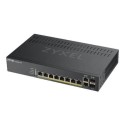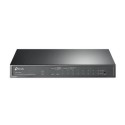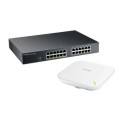Congratulations! Your promo code PROMOCODE will be automatically applied when you check out – enjoy.
The Cisco Nexus 3524 switch, the second member of the Cisco Nexus 3500 platform, is a compact 1RU form-factor 10 Gigabit Ethernet switch providing line-rate Layer 2 and 3 switching with ultra-low latency. A license is required to enable the remaining 24 ports. The switch runs the Cisco NX-OS software operating system, providing customers with a comprehensive feature set, including Algo Boost technology and functions that are widely deployed globally. The Cisco Nexus 3524 contains no PHY chips, allowing low latency and low power consumption. This switch supports both forward and reversed airflow schemes and both AC and DC power inputs.
Hitless Network Address Translation (NAT)
In many financial trading environments, trade orders must be sourced from the IP space of the provider, requiring NAT at the border between networks. The Cisco Nexus 3500 platform can perform NAT for IPv4 unicast routed packets without incurring any additional latency. The Cisco Nexus 3548-X and 3524-X Switches introduce multicast NAT to the platform’s capability. Customers hosting co-locations will find this feature useful in simplifying their network topologies and concealing details of their data centers.
Latency monitoring
When nanoseconds matter, switch latency monitoring is essential to your company’s profitability. The Cisco Nexus 3548-X and 3524-X enable users to finely control their environments to increase network performance. Customers can identify latency on a specific egress port through the Command-Line Interface (CLI) and export this information to a file. The programmability of the Cisco Nexus 3548-X allows users to use this information in real time.
Active buffer monitoring
Even on the lowest-latency switches, data packets can incur a millisecond or more of latency during periods of congestion. Today’s switches do not adequately inform administrators about the presence of this congestion, leaving them unaware and hindered in their ability to address the conditions causing suboptimal performance. Previous buffer utilization monitoring techniques were based entirely on software polling algorithms with polling intervals higher than 100 ms, which can miss important congestion events. In contrast, Algo Boost accelerates the collection of buffer utilization data in hardware, allowing sampling intervals of 10 ns or less.
Advanced traffic mirroring
The Algo Boost technology on the Cisco Nexus 3500 platform facilitates not only network troubleshooting by supporting Cisco Switched Port Analyzer (SPAN) and Encapsulated Remote SPAN (ERSPAN) technologies, but also in-service network monitoring with enhancements






















.png?v=0)













